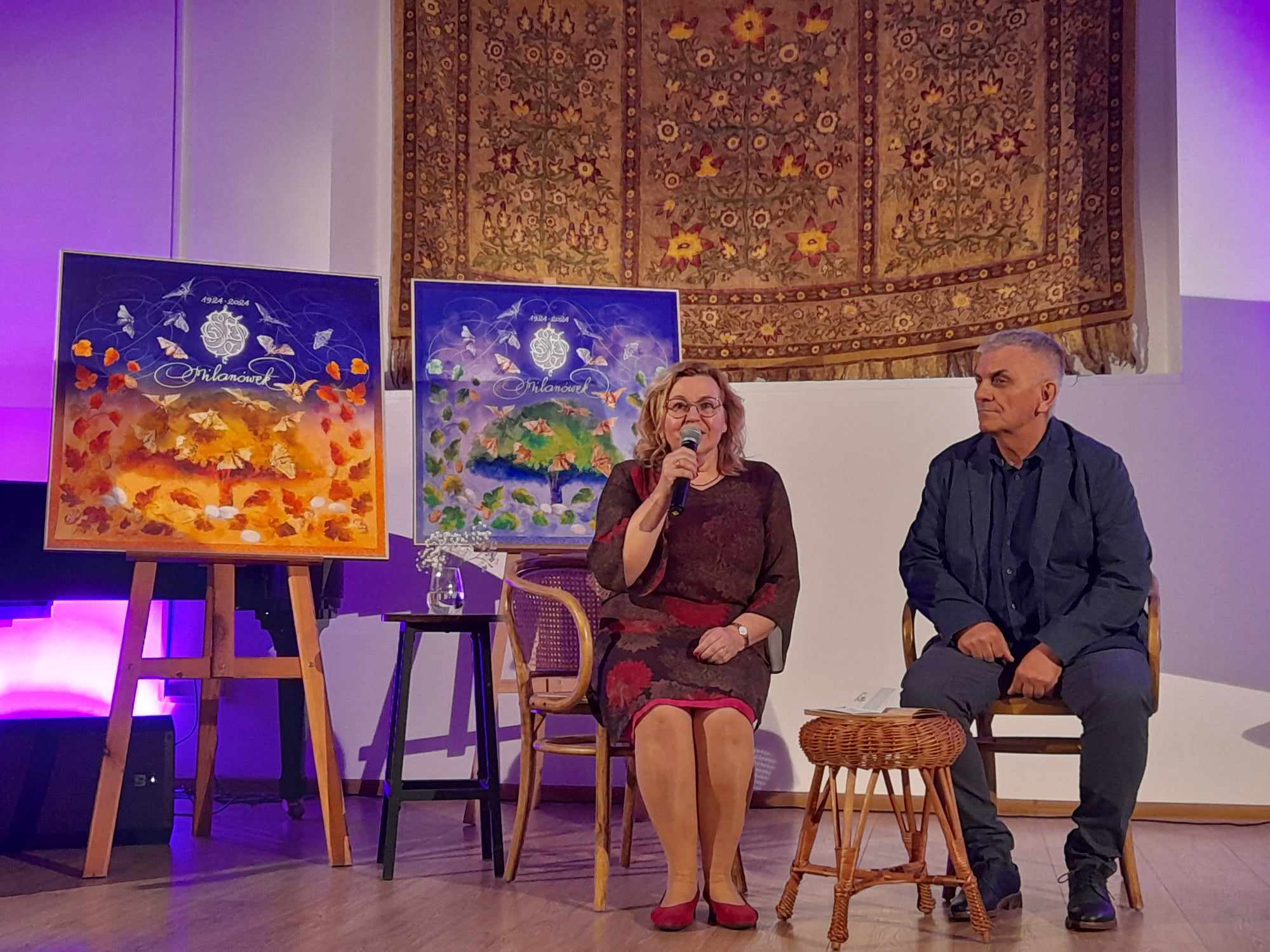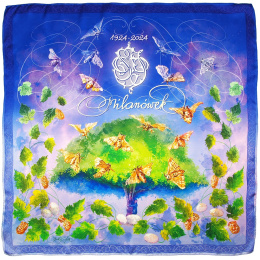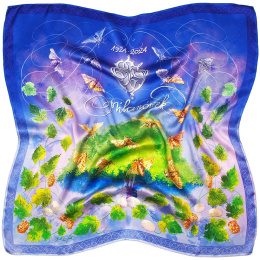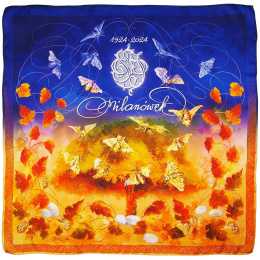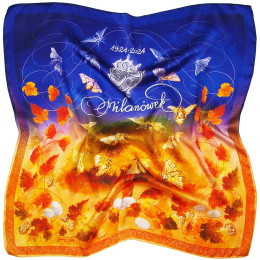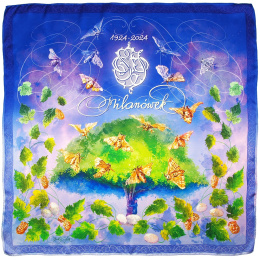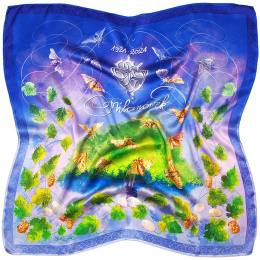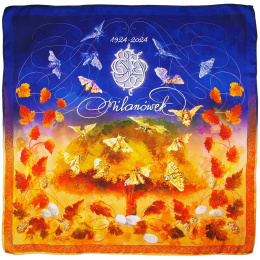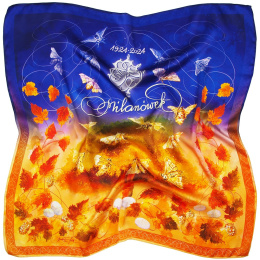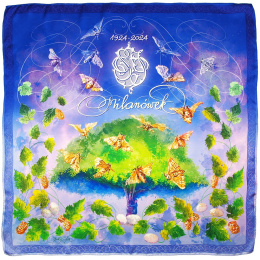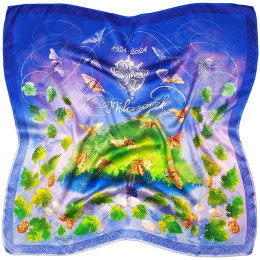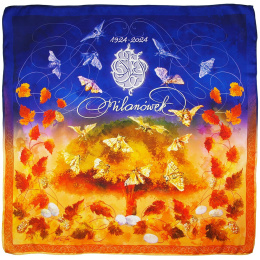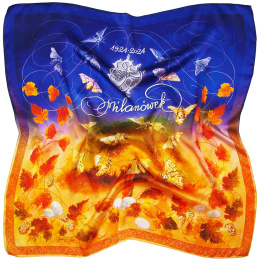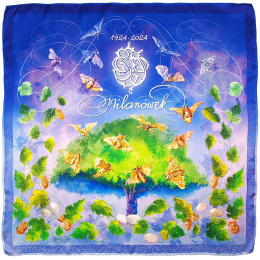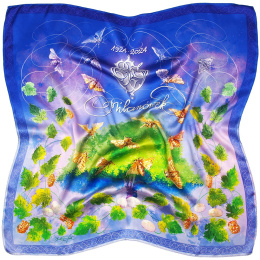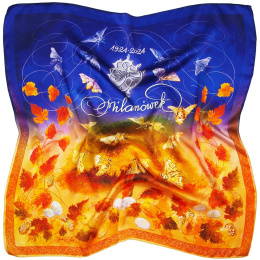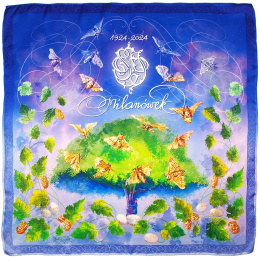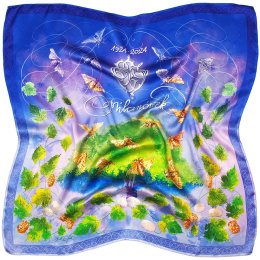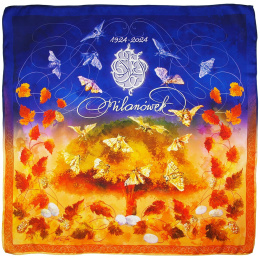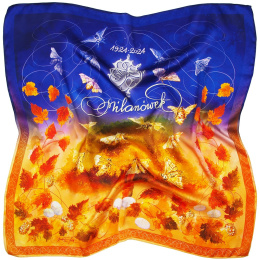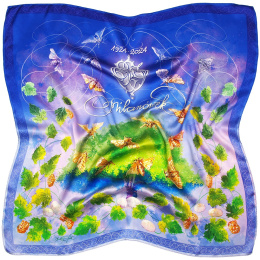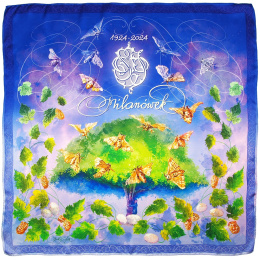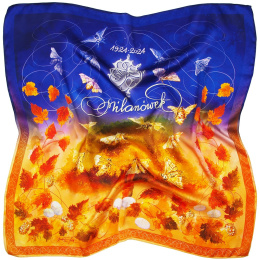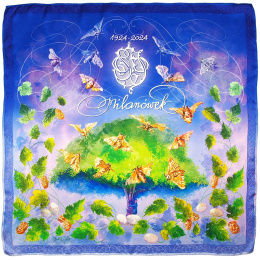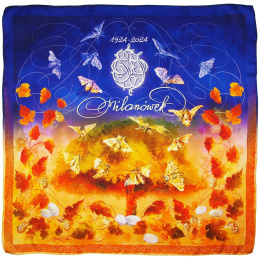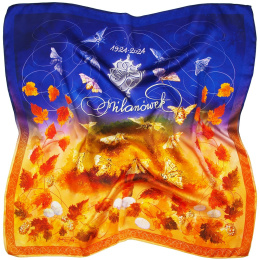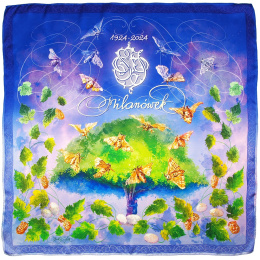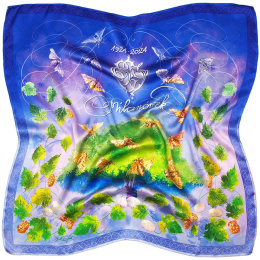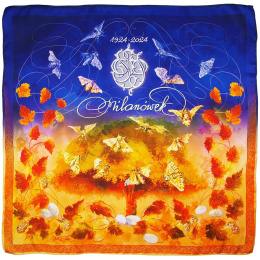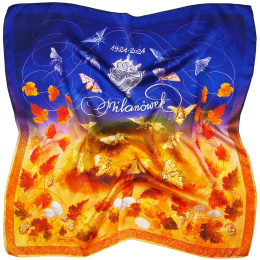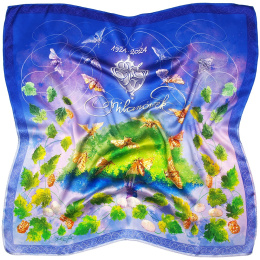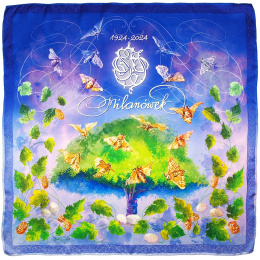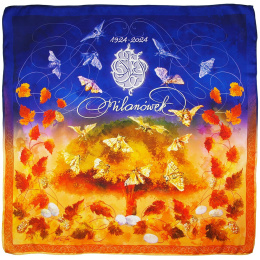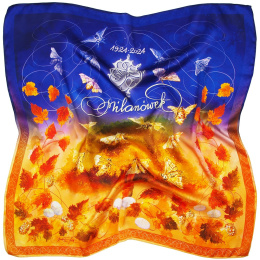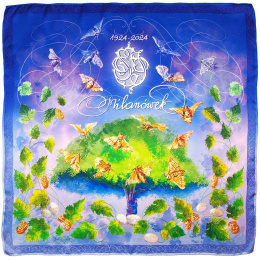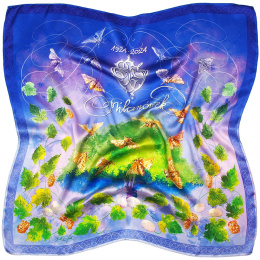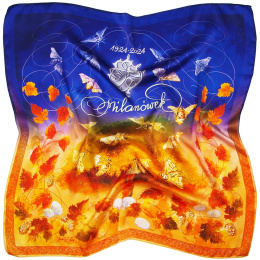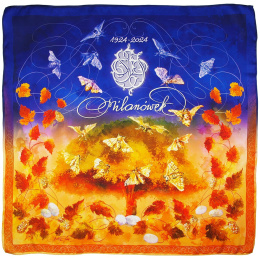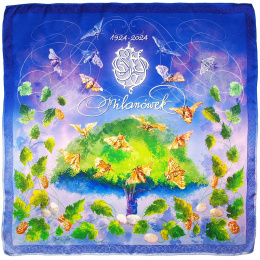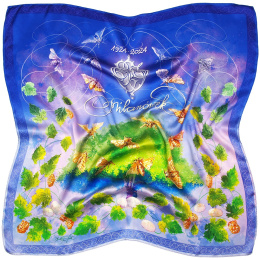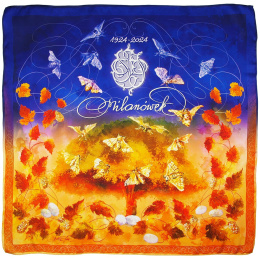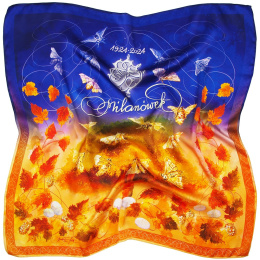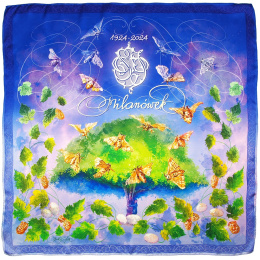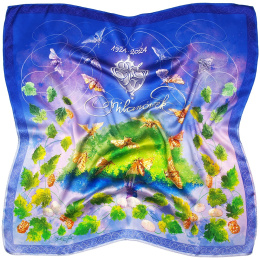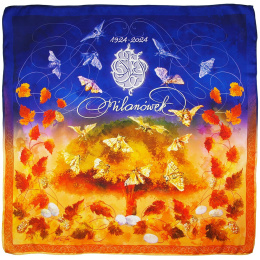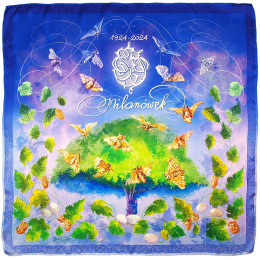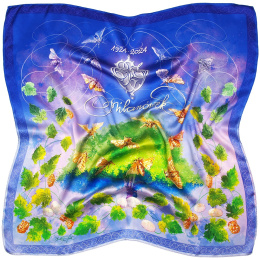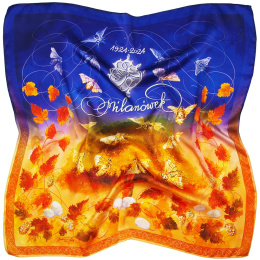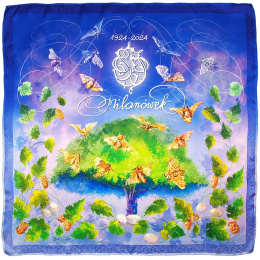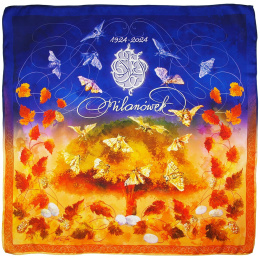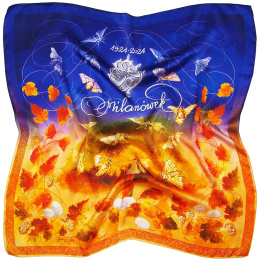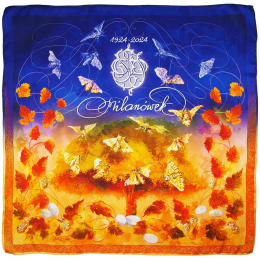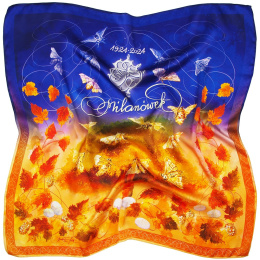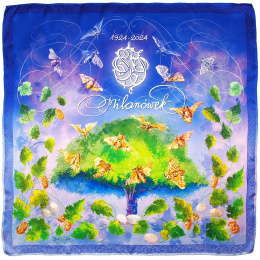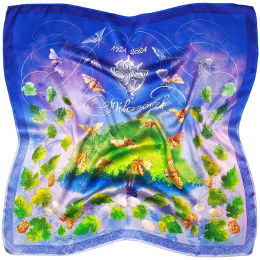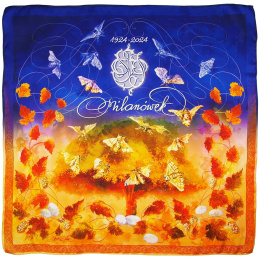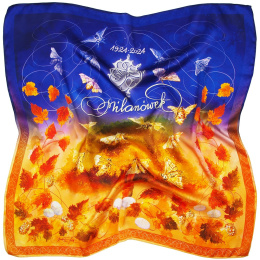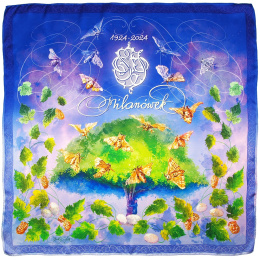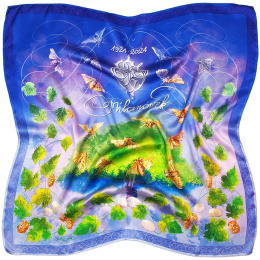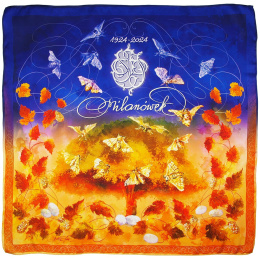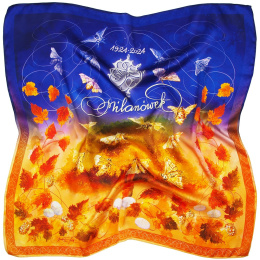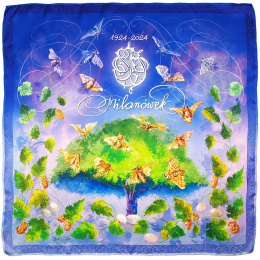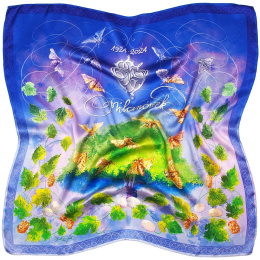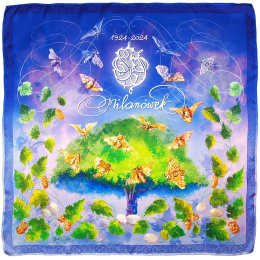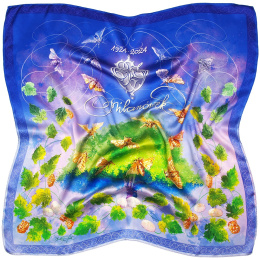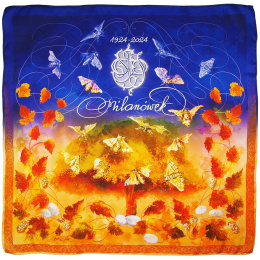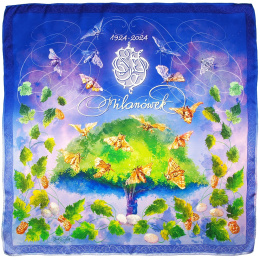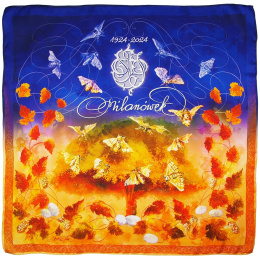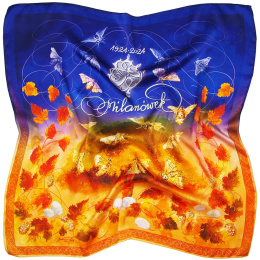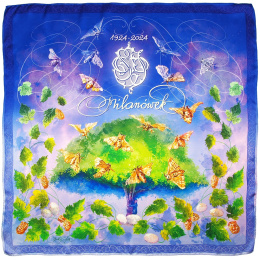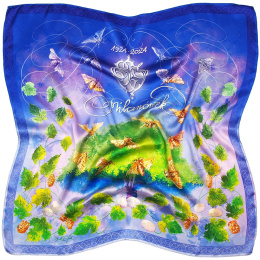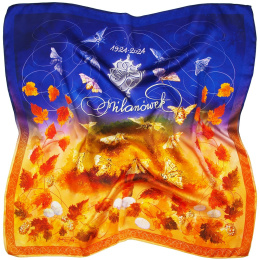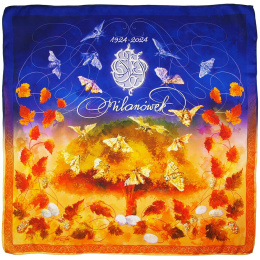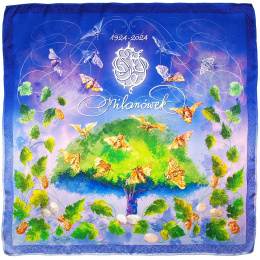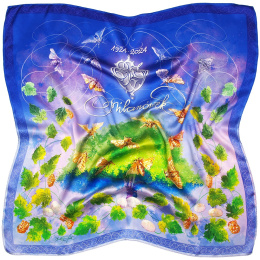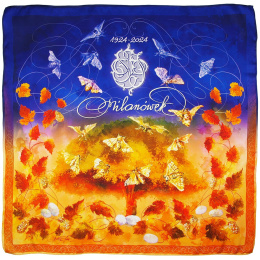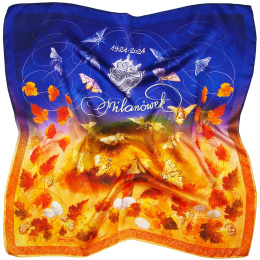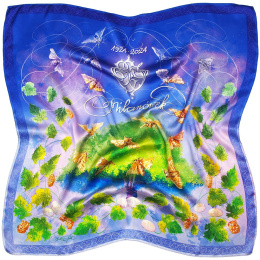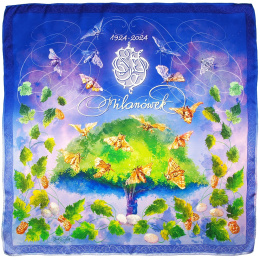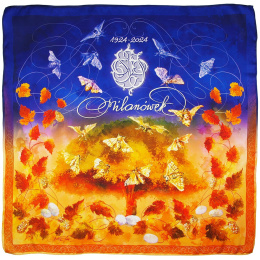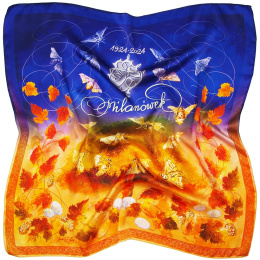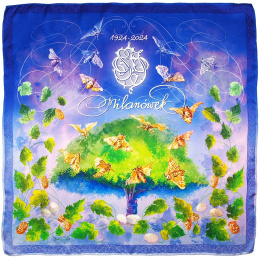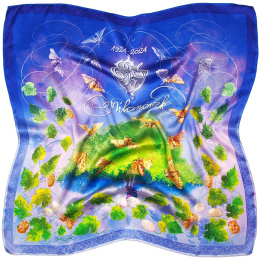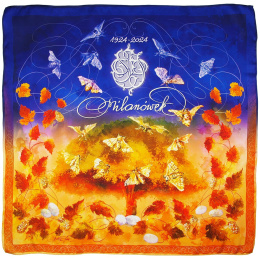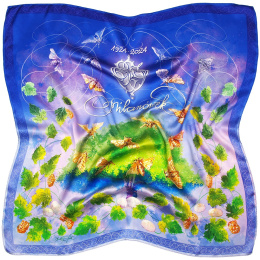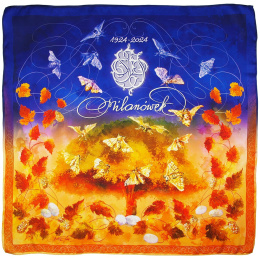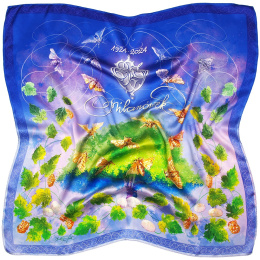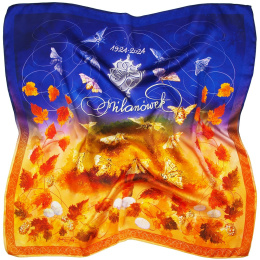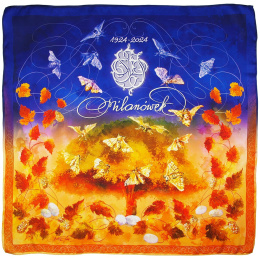DARMOWA DOSTAWA OD 300 zł
Zapisz się do newslettera na dole strony i odbierz 5% rabatu na pierwsze zakupy.
- Kategorie
- Szukaj
-
Kolekcja na 100-lecie Jedwabnictwa
 100 lat jedwabnictwa w Milanówku 1924-2024
100 lat jedwabnictwa w Milanówku 1924-2024
Dziękujemy pani Honoracie Kuraszkiewicz za ogromny wkład w powstanie niniejszej kolekcji. Dziękujemy, że jak żaden inny Milanowianin pielęgnuje lokalne tradycje jedwabnicze. Jej pomysł na stworzenie jedwabnej apaszki na stulecie milanowskiego jedwabnictwa zaowocował powstaniem Kolekcji na 100-lecie Jedwabnictwa stając się hołdem dla bogatej historii naszego miasta. Dzięki pani Honoracie jedwabnicze tradyce Milanówka ożywają i pokrzepiają serca młodszych pokoleń. Jej zaangażowanie i praca w lokalną kulturę i rzemiosło zasługują na szczgólne uznanie. Owoc zasiany miłością wzrasta tak, jak pomysłowość pani Honoraty i inspiruje do dalszego poszukiwania i kreatywnego wyrażania milanowskich tradycji w nowoczesny sposób.
Dziękujemy, Łukasz Łumiński wraz z zespołem Luma Milanówek
Marzenia o jedwabiu
„Długa, szeroka aleja, obsadzona potężnymi, wysokimi drzewami morwowymi, na końcu której w południowym słońcu Tyflisu jarzący się oślepiającą bielą pałac z baśni. Taką ją zobaczył po raz pierwszy i taką się zachwycił harcerz Henryk, który wyruszył na poszukiwanie podarku dla swojej dalekiej Ojczyzny. Ciągle jeszcze brzmiały mu w uszach słowa druha Mularskiego: „Pamiętajcie, nie wolno wam powracać do Polski z pustymi rękami. Każdy musi Jej przywieźć w darze to, co napotka najcenniejszego”. Miał pewność, że znajdzie ów dar, jeszcze nie znany, ale cenny, bowiem bez niego nie powróci. A tam na niego czekają! … Poczuł się mały i nieporadny wobec tych dwudziestometrowych olbrzymów, które dwoma równymi szpalerami wskazywały mu drogę. Objął najbliższy ciemnoszary, spękany pień. No tak, rozłożonymi ramionami obejmował akurat połowę dostojnego drzewa. Stary pan ocknął się nagle: drzewa zasadzono z wyraźnym poczuciem humoru na zmianę - morus nigra, morus alba i znowu nigra i alba… Aż pod pałac. … W białym pałacu, otoczonym niskim żywopłotem morwowym, w pałacu, gdzie miała swą siedzibę Gruzińska Stacja Jedwabnicza, harcerz Henryk po ukończeniu gimnazjum pracował przez dwa lata jako robotnik wędrując po wszystkich działach, aby zapoznać się z piękną sztuką jedwabniczą. Zwierzył się był swoim gruzińskim przyjaciołom, że pragnie zawieźć do Ojczyzny tajemnice ich sztuki, o której marzył już Staszic! …. Polska więc marzyła o jedwabiu! Henryk Witaczek, młody przypadkowy ewakuant z okresu pierwszej wojny światowej, postanowił, że on to wielowiekowe marzenie spełni.”
Fragment z książki „Baba z Wozu” Joanna Gorczycka

Czas rozkwitu
Po powrocie do kraju w roku 1921 Henryk Witaczek studiując prawo na Uniwersytecie Warszawskim, jednocześnie badał możliwości zaszczepienia jedwabnictwa w kraju oraz drogi jakimi rozwijało się ono na świecie i usiłował zainteresować sprawami jedwabnymi Ministerstwo Rolnictwa, a później społeczne organizacje rolnicze. Spotkawszy się jednak z niedowierzaniem i niedocenieniem tych możliwości, a nawet z bardzo ostrą krytyką, chciał dowieść słuszności swojej idei, w którą wierzył i postanowił wszystkie swe wysiłki włożyć w samodzielne jej zrealizowanie. W 1924 roku, wierząc w potencjał swojego pomysłu, którego nie udało się zrealizować przy wsparciu rządu, Henryk Witaczek stworzył wraz z siostrą Stanisławą, Centralną Doświadczalną Stację Jedwabniczą w Milanówku. Ta inicjatywa stanowiła fundament dla rozwoju nowego sektora w przemyśle, związanego z jedwabiem. Działalność CDSJ miała na celu promowanie hodowli jedwabników oraz przetwórstwa jedwabiu, co miało istotne znaczenie dla lokalnej gospodarki i przyszłości przemysłu jedwabniczego w Polsce. Determinacja Witaczków i ich niesamowita pasja doprowadziły do rozwoju technologii oraz metod produkcji, które przyczyniły się do uzyskania znaczących osiągnięć w produkcji włókienniczej. Produkcja włókiennicza CDSJ w tym okresie koncentrowała się na wytwarzaniu szerokiego asortymentu jedwabnych tkanin. Produkowano właściwie wszystkie klasyczne rodzaje tkanin z jedwabiu: płótno z greży, taftę gładką i deseniową, krepę oraz fantazyjne tkaniny sukienkowe. Wysoka jakość tkanin spadochronowych także była istotnym elementem oferty. W miarę rozwoju firma przystąpiła do produkcji tkaniny dekoracyjnej, obiciowej, historycznej i sztandarowej. Oprócz samych tkanin, CDSJ opracowało nowe metody produkcji nici do szycia i haftu, tkanin dekoracyjnych, linek spadochronowych, nici chirurgicznych oraz przędzy izolacyjnej. Wyroby z Milanówka cieszyły się uznaniem zarówno w kraju, jak i za granicą. Były eksponowane na licznych wystawach oraz eksportowane do Anglii i Szwecji.
.jpg)
Rodzeństwo - Henryk i Stanisława Witaczek fot.: https://www.obiektywna.pl/Milanowek/rodzina-witaczkow3
Stan wojenny
1 września 1939 r. wprowadzono stan wojenny na obszarze całego państwa polskiego. Henryk Witaczek w obawie, by Niemcy nie użyli jego placówki do wyrobu tkanin jedwabnych na cele wojskowe, błyskawicznie rozmontował całą wytwórnię, pozostawiając jedynie krosna tkackie i zakład na tkalnie jedwabi sztucznych z surowca sprowadzanego z Chodakowa. Surowiec jedwabiu prawdziwego ukrył przed Niemcami. Podczas wojny Henryk Witaczek nie ustawał w swej akcji rozwoju hodowli jedwabników na terenie tak zwanej generalnej guberni. Jednocześnie Centralna Doświadczalna Stacja Jedwabnicza była azylem dla setek ludzi, chroniących się przed wywiezieniem, głównie młodzieży. Henryk Witaczek był zaangażowany w działalność charytatywną, pomagając osobom wysiedlonym z Pomorza i województwa poznańskiego. Jego inicjatywy obejmowały między innymi dostarczanie mieszkań, odzieży oraz miejsc pracy dla osób w trudnej sytuacji. Po Powstaniu Warszawskim akcja charytatywna zyskała na intensywności, co skutkowało powstaniem specjalnej szwalni, gdzie wytwarzano odzież i kołdry. Witaczek organizował również przytułki i jadłodajnie dla potrzebujących. W ramach tych działań, przyjęto do Domu Ks. Boduena aż 600 osób. Jego działania miały ogromne znaczenie w odbudowie społeczności po wojennych zawirowaniach.
Wyzwolenie
Po wyzwoleniu CDSJ stało się częścią struktury państwowej. Henryk Witaczek, jako nowo mianowany dyrektor naczelny, miał ogromny wpływ na modernizację i odbudowę zakładów jedwabniczych. Dzięki jego wizji i determinacji, zainicjowano szereg reform, które pozwoliły na wprowadzenie nowoczesnych technologii w procesie produkcji jedwabiu. Witaczek skupił się na poprawie warunków hodowli jedwabników, co zaowocowało wzrostem ich populacji oraz wydajności. W ramach rewitalizacji, zakład przeszedł gruntowną reorganizację, w tym modernizację infrastruktury oraz wdrożenie nowych metod produkcji. Witaczek stał się postacią kluczową dla polskiego jedwabnictwa, a jego osiągnięcia miały dalekosiężne konsekwencje dla całej gospodarki regionu. Henryk Witaczek, przeniesiony na stanowisko dyrektora Państwowego Instytutu Jedwabniczego, miał krótką kadencję, ponieważ wkrótce został zwolniony z posady. Henryk Witaczek skomentował ten fakt w swoim życiorysie: „Będąc zwolniony z Zakładów, które stworzyłem, w których pracowałem z całym oddaniem w ciągu ostatnich 4 lat po wojnie, bez podania powodów zostałem oderwany nagle od pracy, której poświęciłem całe życie”.
Jedwab jest wieczny
Choć na tym nie koczy się działalność Zakładów Jedwabniczych i jedwabnictwa w Milanówku to pamięć o Stanisławie i Henryku Witaczkach, którzy zapalili siebie i innych do idei zaszczepienia jedwabnictwa w naszym kraju jest żywa. Zrobili wiele rozpowszechniając swój pomysł, dając dodatkowy zarobek hodowcom jedwabników, ucząc innych całego procesu otrzymywania gotowych materiałów i różnych innych artykułów z jedwabiu. A ich główną zasługą było pokazanie ludziom rzeczy pięknych, bo jedwabnych.
Oddajemy państwu do rąk rzecz piękną, bo jedwabną!

